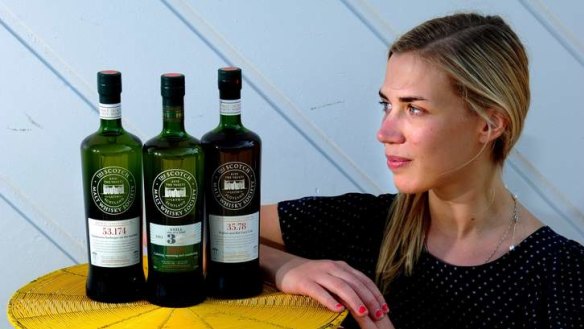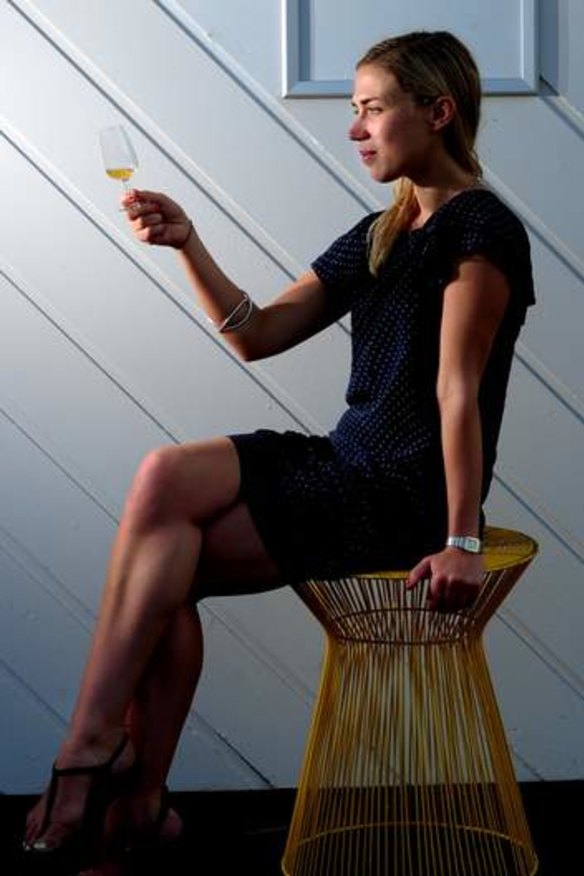Willing spirit
Making, and marketing, a malt whisky demands capital and a strong nerve.

Barrel-strength malt whisky isn't "a dram for the feint hearted", declares a recent Scotch Malt Whisky Society press release.
I'm sure they meant faint-hearted, but we get their drift. We could also add that making, maturing and marketing luxury goods, such as malt whisky, isn't for faint-of-heart businesses. Success requires loads of capital, patience, global reach and unique marketing skills.
Successful marketers of luxury goods make us feel good about paying big bucks for their glamorous brands.

They have to bring in enough money to cover the real cost of production and marketing, plus a nice mark-up for themselves and acceptable profit margins for everyone in the distribution chain. In the case of single-malt whisky, production might involve maturation in oak barrels for a decade or more before blending and bottling.
In simple terms, this means a malt whisky producer carries the costs of production, storage and maintenance for 10 years or more before receiving a cent.
But it takes considerable market power - and powerful brand marketing - to achieve a good return on investment.
Good marketers follow consumer tastes but also head off in new directions, taking consumers with them. A colourful example of this in recent years was the Glenmorangie Company's acquisition of the Scotch Malt Whisky Society.
Glenmorangie, a distiller of Highland Malt Whisky, is part of luxury goods company, LVMH (Louis Vuitton Moet Hennessy). The company makes and markets, as well as Louis Vuitton luggage, many of the world's great wine and spirit brands, including Moet and Chandon and Veuve Clicquot Champagnes and Hennessy Cognac. Its southern hemisphere wineries include Domaine Chandon and Cape Mentelle in Australia and Cloudy Bay, New Zealand.
Glenmorangie's purchase of the Scotch Malt Whisky Society steps away from the beaten path.
It picks up on a growing consumer taste for small-production specialties, generally with strong regional appeal. But the society's operations seem disconnected from the Glenmorangie brand.
The society, with 26,000 members globally (1500 in Australia), formed 30 years ago, growing, according to society ambassador Georgie Bell, who visited Canberra in March, from a group of Edinburgh malt enthusiasts, led by Pip Hill.
The story goes that in the late 1970s, with little single-malt whisky on the market, Hill sourced a single barrel from a Speyside producer and decanted it to gallon jars with a group of like-minded friends.
The group grew by word of mouth and in 1983 became a society, dedicated to sourcing and bottling individual casks of malt whisky. Bell says the society now has branches in 18 countries.
It chooses and bottles individual barrels of whisky from 129 distilleries, principally in Scotland, but also from two in Ireland, one in Wales and two in Japan.
An enthusiastic 24-year-old, Bell taught herself to like whisky while working in an Edinburgh cocktail bar as a uni student. She submitted a final-year dissertation on the geography of whisky, based on a case study of the island of Islay and how its identity stems mainly from its whisky production.
Bell attended the society's Canberra tasting in March, following events in Canada, the United States, Sydney and Melbourne. She jetted off to open the new Mumbai branch the next morning. Over three single-cask malts before the Canberra tasting, Bell talked of a new image for malt whisky - a shift away from cigar-smoking, middle-aged blokes.
Bell describes a significant women and whisky movement emerging in Britain. And she attributes whisky's appeal to the collection of flavours it presents - seeing strong parallels to perfume, another of her interests.
The three whiskies we compare vary amazingly from one another. The society's whisky labels feature two numbers - one representing the distillery, the other the cask number, and a cryptic descriptor. For example, we tasted 121.57, described as "bittersweet symphony".
By going to whiskyportal.com I learned that 121 is the number for the Isle of Arran Distillery.
This is a pale, comparatively delicate whisky with attractive citrus character. Go easy, though, at 55.4 per cent alcohol.
The second whisky, 35.78 "praline and flat Coca Cola" (from the Glen Moray Distillery, 58.5 per cent alcohol) had been matured for 14 years in sherry casks. It was, in a way, like sherry on steroids, with a rich, delicious caramel-like malt flavour pushing through the sherry-like overlay, with a spicy, oaky aftertaste.
The third whisky, 53.174, "sumptuous barbecue on the Machair", combined strong, smokey, peaty aromas (derived from drying the malted barley with peat smoke) with tangy sea-spray character.
This 64.2 per cent alcohol dram came from the Caol Ila Distillery, Islay.
The society sells its whiskies to members only. However, you can become a member by paying a joining fee and annual subs or, far more palatably, by attending one its quarterly tastings, known as outturns, and buying whisky - details at smws.com.au.
Prices of whiskies in the present release vary from $150 to $680 a bottle. If you're visiting Melbourne, several are on tasting at the Whisky and Alement bar, Russell Street.